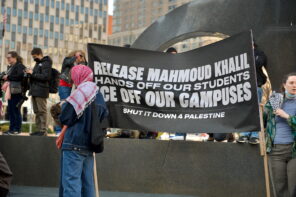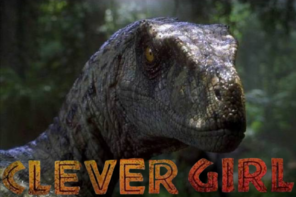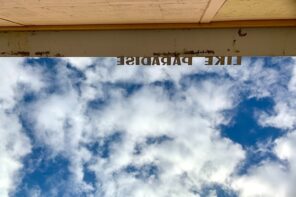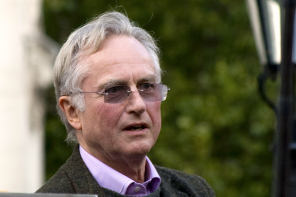In a recent essay in the New York Times, Dennis Overbye laments the virus-like proliferation of science rumors. Not a day goes by, it seems, that we aren’t bombarded with scientific information that could potentially, as he writes, “rock the Universe As We Know It.” Overbye is not decrying the abundance of scientific discoveries that seem to bring us one step closer to understanding the big picture questions of life (Who are we? Where do we come from? Who else is out there?). What is troubling is the explosive combination of (even modest) statements by scientists that travel across the Internet at warp speed with the public’s thirst for quick answers to these cosmic questions.
When it comes to science in the media, it seems that complicated questions are often boiled down to simple, easily digested messages that promise to change our world in the blink of an eye. We want black-and-white answers to complicated questions about life, reality, and nature—things that can’t always be described in a Twitter-friendly 140 characters or less.
These questions about life and reality are often the same questions that sit at the heart of the so-called wars between religion and science, depicted in the media as two opposing sides in an endless battle. It’s as if the world exists in two realms: scientists on one side, religion (and those who study it) on the other.
In an interview this summer, Diane Sawyer explored “the God question” with physicist Stephen Hawking. When asked about whether there might be a relationship between religion and science, Hawking explained that, “there is a fundamental difference between religion, which is based on authority, [and] science, which is based on observation and reason. Science will win because it works.” The match seems to be set: in one corner we have scientists who argue for science, reason, modernity, and progress and in the other, we have religious believers who see an intelligent design in creation and a divine plan for life. But is it really that simple?
Despite these publicly marked divides, the field of religion and science cannot easily be described by sticking a “vs.” between the two words. Rather than an ideological battle in which, as Hawking states, one side of the ring will “win” over the other, for some, the question is about how the two sides might work together.
For these researchers and funders, the question is not religion vs. science, but how to integrate the two.
Following the Funding
In an article for The Nation, RD contributor Nathan Schneider chronicled how the John Templeton foundation has carved a growing niche for scientists interested in tackling what they call the “Big Questions” of religion and science. As the foundation notes, Sir John Templeton was interested in these questions in order to discover “new spiritual information,” that might lead to a greater understanding of humanity and nature and, significantly deeper religious truths. As Schneider notes, the combination of the foundation’s immense funding pool and its focus on “elite research and broad understanding” has placed it at the center of controversies around the proper realm of influence between religion and science. New Atheist critics like Richard Dawkins have accused the foundation of trying to manipulate science in order to prove something about religion. While the foundation’s grant recipients argue that is not the case, the controversies and questions that surround Templeton funding and projects bring to light a key question: How can and should we pursue research and teaching in the area of religion and science?
In part due to the proliferation of Templeton funds, research and teaching in the interdisciplinary field of religion and science is growing rapidly. Among these scholars and teachers, there are many who are seeking out a more dialogical approach, as well as a more critical view of the kind of assumptions that fuel the science/religion opposition. Is it reasonable to believe, as Stephen Hawking seems to, that religion is always on the side of the irrational? Or that scientists are not frequently aware of the fluidity of the assumptions that undergird their work, or of the philosophical and historical contexts they work in? At the very least, these must be open questions.
This type of approach to religion and science was highlighted in an April 2009 roundtable hosted by Emory University, and funded by the Ford foundation. The participants—scientists, scholars, and practitioners of religion—were tasked with thinking through the question of how to engage various publics in a deeper understanding of the relationship between religion and science.
Thinking Things Through
The scholars began by discussing the ways that science is often presented in the media—the sort of “gee whiz” culture that assumes scientific discovery is a quick fix to society’s problems. Participants also highlighted the heated debate around particular issues that sit at the crossroads of religion and science: evolution, stem-cell research, abortion debates, genetic testing, sexuality and reproductive health. Given the embattled language of these debates and the abundance of promised miraculous answers to complicated questions, participants wondered how their students (let alone the public) are able to navigate these arenas. While ideological wars rage on, the real question seemed to be: How are we helping students to make sense of it all?
Bringing in examples from their own classroom experience, roundtable participants argued that a more dialogical education to science and religion could help to develop students’ critical skills in thinking through these complex issues. These examples highlighted the ways that students can become a part of the “story” behind science. Professors stressed the importance of primary texts, and of history. Creative pedagogical models that partner researchers and students were also emphasized. Dr. David Lynn of Emory University highlighted Emory’s On Recent Discoveries by Emory Researchers (ORDER) program, which places graduate student teacher-scholars in the classroom with undergraduate students to help undergraduates to realize the importance of discovery in the development of new ideas in science.
In addition to these concrete examples, participants brainstormed ways that the classroom can bridge the religion vs. science culture wars. Some ideas included teaching with open-ended questions, learning to be comfortable with some tension in the classroom, building supportive classroom environments where students feel comfortable disagreeing with one another, engaging practices (rather than just theories) in the classroom, bringing in “real-world” applications, and travel.
Each of these teaching strategies seeks to create a new kind of classroom, one in which discovery, process, and, most importantly, dialogue are at the center of the religion and science conversation.













